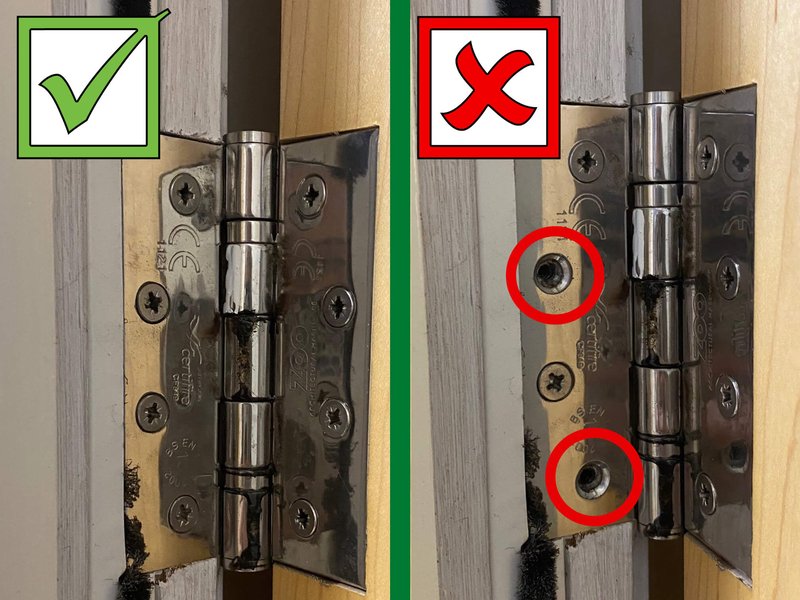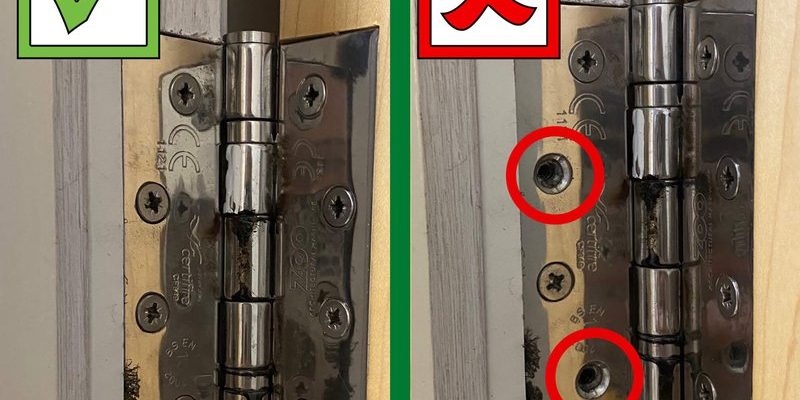
Imagine you’re walking into a room, but the door won’t budge without a fight. You push and shove, and it creaks like an old haunted house. Talk about frustrating! That’s why regular checks on your door hinges are a great way to prevent these little annoyances. Think of it like routine maintenance for your home; it keeps everything humming along nicely and saves you from bigger repairs down the road.
What Causes Door Hinges to Misalign?
You might be wondering, “What even makes hinges go out of whack?” Several factors can lead to misalignment. First off, wear and tear over time is a major contributor. Just like how you’d expect your shoes to get worn out after years of use, door hinges experience the same degradation. This wear can lead to loose screws or damaged parts.
Another common cause is humidity. Doors can warp in areas with high humidity. Think of those sticky summer days when everything feels heavier. When wood absorbs moisture, it can change shape, making the door fit awkwardly in its frame. Similarly, temperature fluctuations can cause the materials to expand and contract, throwing the whole system off balance.
Finally, improper installation can also lead to misaligned hinges. If the screws are driven in too tightly or too loosely, it can cause the door to hang incorrectly. Imagine baking a cake: if the oven’s temperature is off, the cake might not rise properly. The same concept applies here.
How to Check for Misalignment
So, how do you know if your hinges are misaligned? Start with a simple inspection. Stand in front of your door and look at the gap between the door and the frame. Is it even? An uneven gap can indicate misalignment.
Next, gently try to close the door. Does it drag on the floor or get stuck? If it feels like you’re wrestling a bear, that’s a sign you might need to make some adjustments. You can also listen for any strange sounds; creaking, scraping, or popping noises are clues that your door needs some help.
You can also observe the hinges themselves. If they look out of position or you notice the screws are coming loose, that’s another red flag. Sometimes, a simple *tightening of the screws* can work wonders.
Steps to Realign Your Door Hinges
If you’ve spotted a misalignment, don’t worry; fixing it can be relatively straightforward. Here’s a step-by-step guide to help you through the process:
- Gather Your Tools: You’ll need a screwdriver, possibly a hammer, and a level. A level ensures everything is even, which is crucial.
- Examine the Hinges: Start by checking the screws. If any are loose, tighten them with your screwdriver. If the screws are stripped or damaged, you might need to replace them.
- Adjust the Position: If the door is still misaligned after tightening, you may need to reposition the hinges. This might involve removing the screws, adjusting the hinges slightly, and reattaching them.
- Test the Door: Close the door to see if it swings smoothly. A level can help ensure everything is perfectly aligned.
By following these steps, you can tackle hinge misalignment right at home.
Preventive Maintenance Tips
Now that you’ve got the hang of checking and fixing misaligned hinges, let’s talk prevention. Just like you wouldn’t skip your car’s oil change, keeping an eye on your door hinges is essential for home maintenance. Here are some practical tips:
- Regular Inspections: Check your door hinges at least once every season. Just a quick look can save you from bigger issues later on.
- Lubrication: Every few months, apply a bit of lubricant to the hinges. It reduces friction, helps them work smoothly, and prevents rust.
- Humidity Control: If you live in a humid area, consider using a dehumidifier. Keeping moisture levels stable helps maintain your doors and hinges.
- Careful Handling: Avoid slamming doors or hanging heavy items off of them. Treating your doors gently can prolong their life.
When you invest a bit of time into regular maintenance, it pays off in the long run.
When to Call a Professional
Sometimes, despite your best efforts, you might find that the problem is beyond a simple fix. You might be wondering, “When should I call in a pro?” Here are a few signs:
– If the door is severely warped or has visible damage, it may need replacement.
– If you’ve tightened all screws and adjusted the hinges but the alignment is still off, you might need a carpenter’s expertise.
– Persistent issues like doors sticking or surprising gaps may indicate problems with the frame or structure of your home.
Calling a professional isn’t a sign of failure; it’s about ensuring the job is done right. You want your doors working perfectly, just like you want your car running smoothly.
Keeping door hinges aligned isn’t just about aesthetics; it’s about functionality and longevity. Regular checks and maintenance can prevent minor issues from escalating. Remember, a little attention can go a long way. Just like you wouldn’t leave a leaky faucet unattended, don’t let misaligned hinges ruin your day.
So grab your tools and add door hinge checks to your home maintenance routine. Your doors—and your sanity—will thank you. With just a bit of effort, you can keep everything swinging smoothly!
